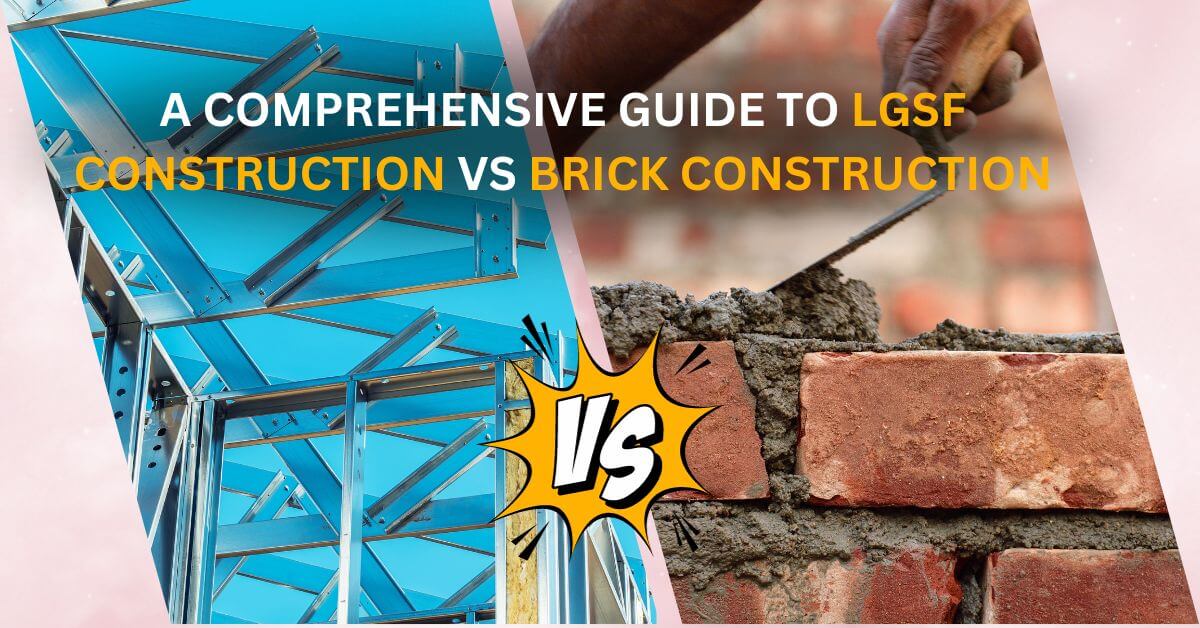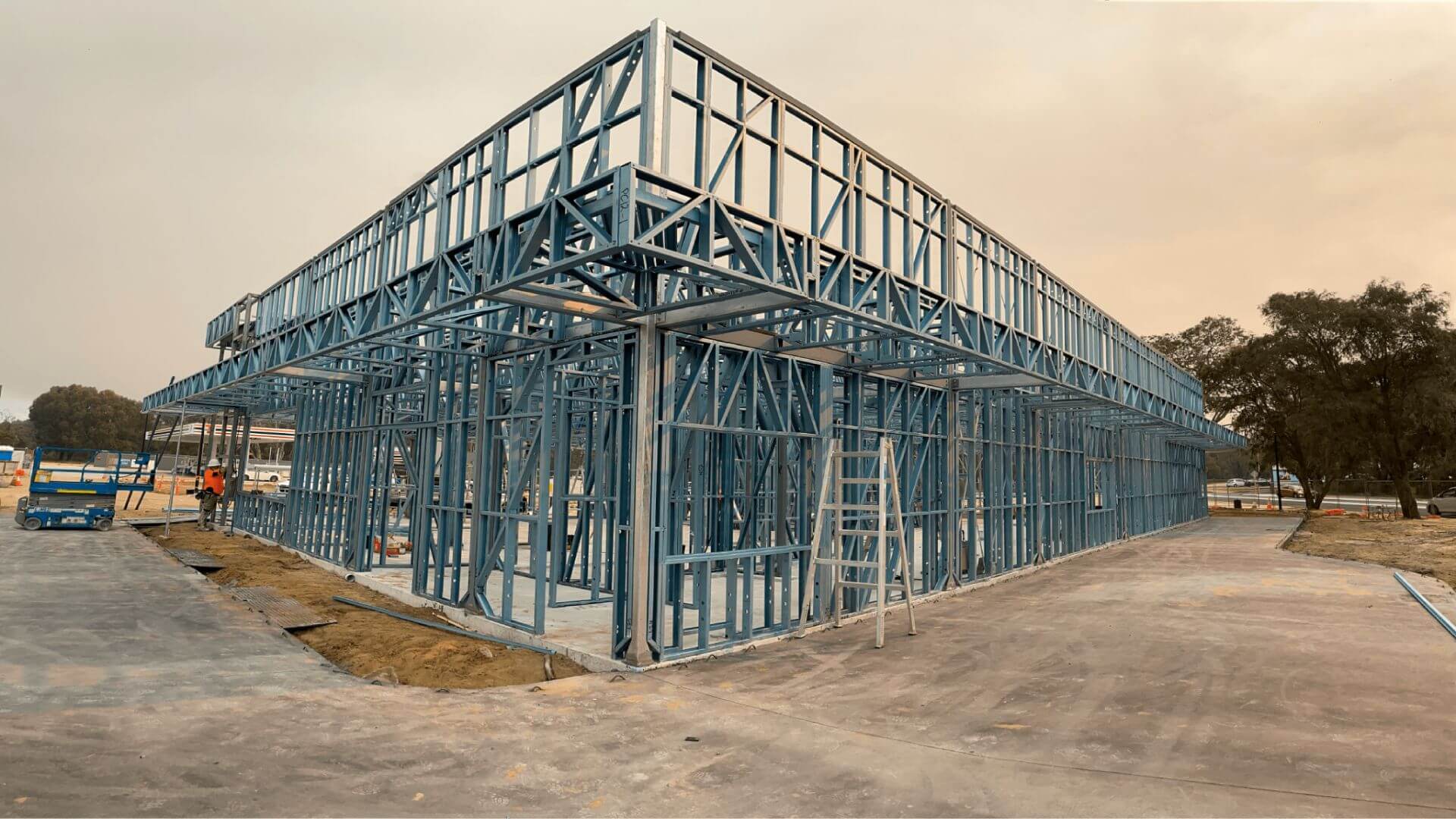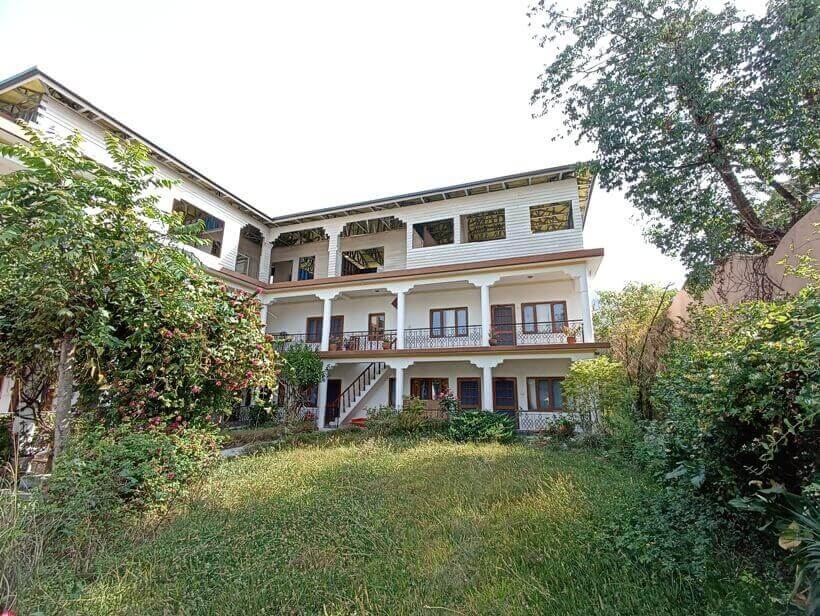
A Comprehensive Guide to LGSF Construction and Brick Construction
In the realm of construction, two methods have gained significant popularity for their efficiency, cost-effectiveness, and structural integrity – Light Gauge Steel Frame (LGSF) Construction and traditional Brick Construction. Each method has its unique characteristics, advantages, and considerations. In this comprehensive guide, we will delve into the key aspects of both LGSF and Brick Construction, aiding you in making an informed choice for your construction projects.

Light Gauge Steel Frame Construction:
Light Gauge Steel Frame Construction, often abbreviated as LGSF, is a modern and innovative approach to building structures using steel frames made from thin, lightweight steel. These frames are typically manufactured off-site and assembled on-site, providing several advantages over traditional construction methods.
Speed and Efficiency:
LGSF construction is known for its rapid assembly. The lightweight steel frames are pre-engineered and fabricated with precision, reducing construction time significantly. This makes it an ideal choice for projects with tight schedules.
Cost-Effectiveness:
Although the initial cost of materials may be higher, LGSF construction offers long-term cost savings. The speed of construction reduces labor costs, and the durability of steel ensures minimal maintenance expenses over the building’s lifespan.
Design Flexibility:
Light Gauge Steel allows for versatile designs. Architects and builders can create complex and aesthetically pleasing structures with ease. The flexibility of steel framing enables open floor plans and large spans, meeting modern design trends.
Durability and Resistance:
Steel is inherently resistant to pests, rot, and decay, ensuring the longevity of the structure. Additionally, steel provides excellent resistance to fire, making LGSF buildings a safer option in comparison to traditional wooden structures.
Environmental Sustainability:
LGSF construction is eco-friendly as it promotes recycling. Steel is one of the most recycled materials globally, reducing the environmental impact of construction projects. The efficiency of LGSF construction also contributes to energy savings.
Traditional Brick Construction:
Brick construction, on the other hand, represents a time-tested method that has been used for centuries. Bricks, typically made from clay or concrete, offer a traditional and robust approach to building structures.

Classic Aesthetics:
Brick buildings exude a timeless charm and add a touch of tradition to the surroundings. The warm, natural colors of bricks contribute to a classic aesthetic that appeals to many.
Thermal Mass and Insulation:
Bricks possess excellent thermal mass properties, absorbing and releasing heat slowly. This characteristic helps regulate indoor temperatures, contributing to energy efficiency. Additionally, brick walls can be insulated to enhance energy performance.
Fire Resistance:
Bricks are inherently fire-resistant, providing a high level of safety. This is a crucial factor in regions prone to wildfires or areas where fire safety regulations are stringent.
Low Maintenance:
Brick structures are known for their durability and low maintenance requirements. Unlike wood, bricks do not rot, warp, or decay. Regular cleaning and occasional repointing are usually sufficient to keep a brick building in excellent condition.
Sustainability:
Bricks are made from natural materials, making them a sustainable choice. Modern brick production practices also focus on eco-friendly methods, minimizing the environmental impact.
Choosing the Right Construction Method:
The decision between LGSF construction and Brick Construction depends on various factors, including project requirements, budget constraints, and personal preferences. Consider the following aspects before making a choice:
Project Timeline:
If time is of the essence, LGSF construction may be the preferred option due to its rapid assembly. Traditional brick construction may take longer, especially for larger structures.
Budget Considerations:
Evaluate the upfront and long-term costs. While LGSF construction may have higher initial material costs, the overall project cost may be lower due to faster construction and reduced maintenance.
Architectural Style:
Consider the desired architectural style. LGSF offers modern design flexibility, while brick construction is ideal for those seeking a classic or rustic appearance.
Environmental Impact:
If environmental sustainability is a priority, both LGSF and brick construction have their merits. LGSF is eco-friendly due to steel recycling, while brick construction is sustainable through the use of natural materials.
Local Building Codes:
Be aware of local building codes and regulations. Some regions may have specific requirements that favor one construction method over the other.
Conclusion:
In the realm of construction, the choice between LGSF construction and Brick Construction ultimately boils down to the specific needs and goals of the project. Both methods offer distinct advantages, and understanding their characteristics can empower builders, architects, and homeowners to make informed decisions. Whether embracing the modern efficiency of LGSF or the timeless appeal of bricks, the key is to align the chosen construction method with the project’s unique requirements, ensuring a successful and durable outcome.
People also ask about A Comprehensive Guide to LGSF Construction and Brick Construction
- What is LGSF construction, and how does it differ from traditional brick construction?
- LGSF stands for Light Gauge Steel Framing, a construction method using thin steel sections. Traditional brick construction involves building with clay or concrete bricks.
- What are the advantages of LGSF construction over brick construction?
- LGSF construction is faster, more cost-effective, and offers superior strength-to-weight ratio. It is also more versatile in design and environmentally friendly.
- Are there any limitations to LGSF construction compared to brick construction?
- LGSF construction may face limitations in certain architectural styles, and it requires skilled labor familiar with steel framing techniques. Brick construction is more traditional but can be time-consuming and labor-intensive.
- Is LGSF construction suitable for residential projects, or is it primarily used for commercial buildings?
- LGSF construction is versatile and suitable for both residential and commercial projects. It is widely used in various building types due to its flexibility and efficiency.
- What are the key considerations when choosing between LGSF and brick construction for a project?
- Consider factors such as project timeline, budget, design flexibility, and local building regulations when deciding between LGSF and brick construction.
- Can LGSF structures be customized to match specific architectural styles?
- Yes, LGSF construction allows for a high degree of customization, making it adaptable to various architectural styles and designs.
- How do the thermal and acoustic properties of LGSF construction compare to brick construction?
- LGSF construction can provide excellent thermal and acoustic insulation when combined with appropriate materials. It may offer comparable or superior performance to brick construction.
- Are there any special considerations for the foundation of LGSF buildings compared to brick buildings?
- The foundation design for LGSF buildings may differ, requiring a thorough analysis of soil conditions and load-bearing capacity. Consultation with a structural engineer is recommended.
- Is LGSF construction more sustainable than brick construction?
- LGSF construction is often considered more sustainable due to reduced material waste, faster construction times, and the recyclability of steel. However, local factors and project specifics should be considered.
- How does the maintenance of LGSF buildings compare to brick buildings over time?
- LGSF buildings typically require less maintenance over time, as steel framing is resistant to issues like rot and pests. Brick buildings may require periodic maintenance such as repointing.
- Are there any fire safety concerns with LGSF construction?
- LGSF construction is inherently fire-resistant. The steel framing does not contribute to the spread of fire, and appropriate fire-resistant materials can be used to enhance safety.
- What types of finishes can be applied to LGSF buildings, and how do they compare to brick finishes?
- LGSF buildings can be finished with a variety of materials, such as drywall, stucco, or cladding. The finish options for LGSF construction are diverse, allowing for aesthetic flexibility similar to brick construction.
- Can LGSF and brick construction be combined in a single project?
- Yes, hybrid construction methods that incorporate both LGSF and brick elements are possible, offering a balance between speed and traditional aesthetics.
- What are the considerations for seismic resilience in LGSF construction compared to brick construction?
- LGSF construction can be engineered to be highly seismic-resistant, with the flexibility of steel frames offering advantages in seismic-prone regions. Proper design and engineering are crucial.
- How does the cost of LGSF construction compare to brick construction, considering both initial and long-term expenses?
- While LGSF construction may have lower initial costs, the overall cost comparison depends on factors such as project size, design complexity, and local market conditions. Long-term savings in maintenance and energy efficiency may contribute to the overall cost-effectiveness of LGSF construction.
